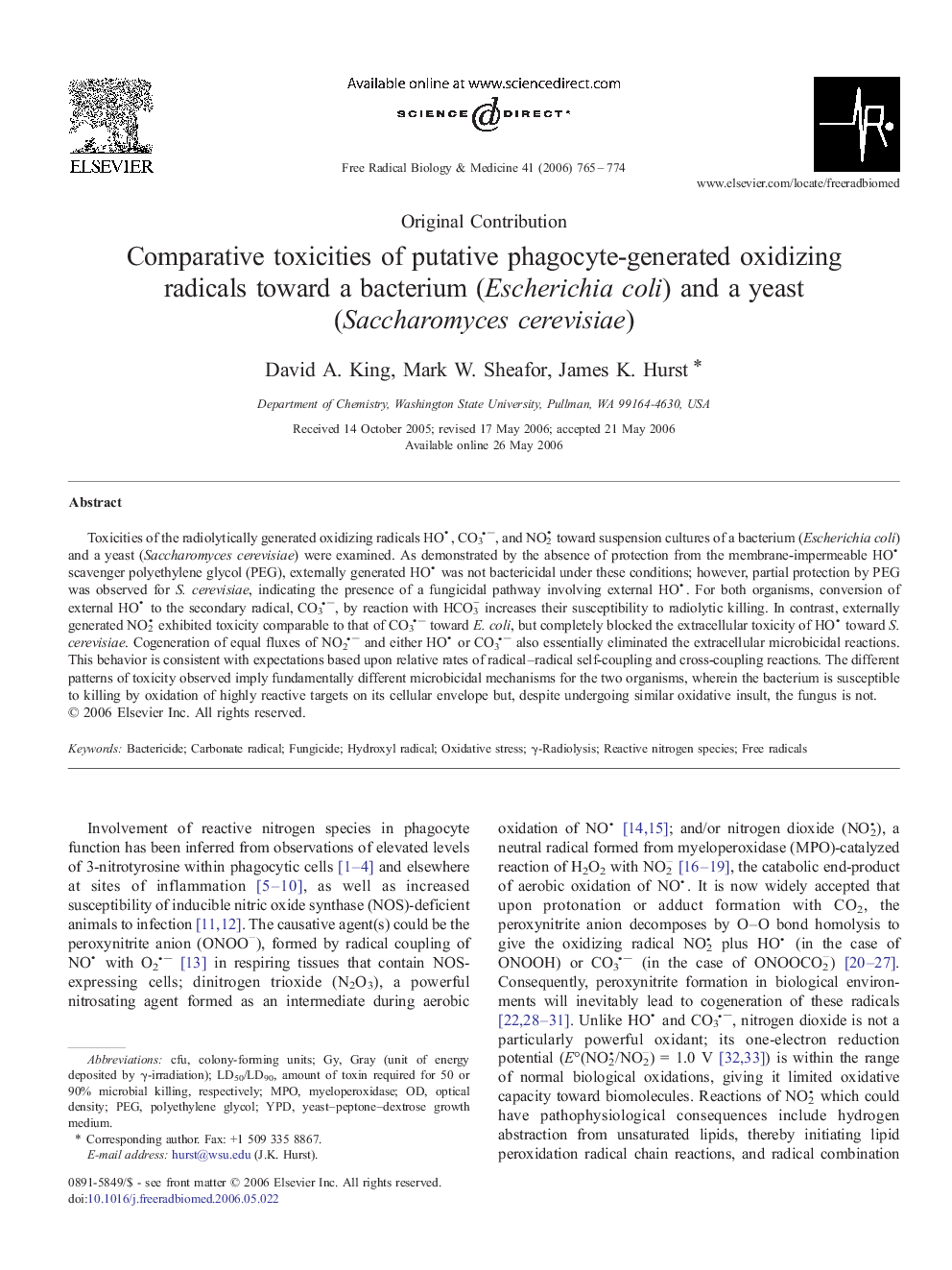| Article ID | Journal | Published Year | Pages | File Type |
|---|---|---|---|---|
| 1912042 | Free Radical Biology and Medicine | 2006 | 10 Pages |
Toxicities of the radiolytically generated oxidizing radicals HO, CO3−a, and NO2 toward suspension cultures of a bacterium (Escherichia coli) and a yeast (Saccharomyces cerevisiae) were examined. As demonstrated by the absence of protection from the membrane-impermeable HO scavenger polyethylene glycol (PEG), externally generated HO was not bactericidal under these conditions; however, partial protection by PEG was observed for S. cerevisiae, indicating the presence of a fungicidal pathway involving external HO. For both organisms, conversion of external HO to the secondary radical, CO3−, by reaction with HCO3− increases their susceptibility to radiolytic killing. In contrast, externally generated NO2 exhibited toxicity comparable to that of CO3− toward E. coli, but completely blocked the extracellular toxicity of HO toward S. cerevisiae. Cogeneration of equal fluxes of NO2− and either HO or CO3− also essentially eliminated the extracellular microbicidal reactions. This behavior is consistent with expectations based upon relative rates of radical–radical self-coupling and cross-coupling reactions. The different patterns of toxicity observed imply fundamentally different microbicidal mechanisms for the two organisms, wherein the bacterium is susceptible to killing by oxidation of highly reactive targets on its cellular envelope but, despite undergoing similar oxidative insult, the fungus is not.
